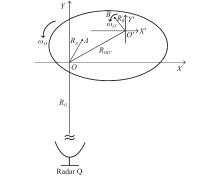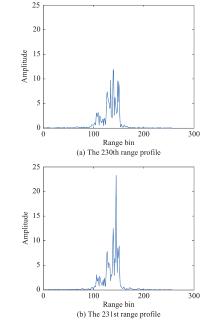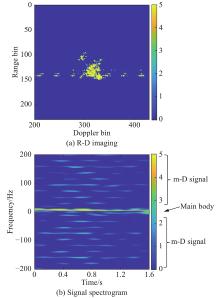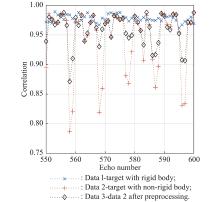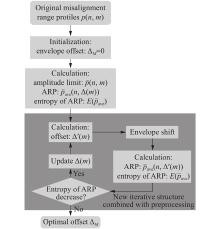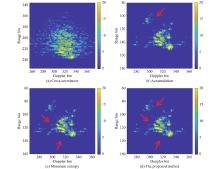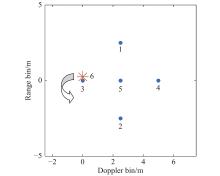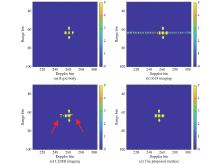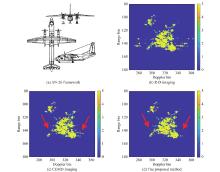| 1 |
CHEN C C, ANDREWS H C Target-motion-induced radar imaging. IEEE Trans. on Aerospace and Electronic Systems, 1980, 16 (1): 2- 14.
doi: 10.1109/TAES.1980.308873
|
| 2 |
WANG J F, KASILINGAM D Global range alignment for ISAR. IEEE Trans. on Aerospace and Electronic Systems, 2003, 39 (1): 351- 357.
doi: 10.1109/TAES.2003.1188917
|
| 3 |
WANG J F, LIU X Z. Improvement of ISAR global range alignment. Proc. of the IEEE International Conference on Image Processing, 2005. DOI: 10.1109/ICIP.2005.1530030.
|
| 4 |
LIU Z, LIAO G, YANG Z Iterative range alignment method with optimised weighted fitting for an inverse synthetic aperture radar. IET Radar, Sonar and Navigation, 2012, 6 (8): 764- 773.
doi: 10.1049/iet-rsn.2011.0329
|
| 5 |
SAUER T, SCHROTH A Robust range alignment algorithm via Hough transform in an ISAR imaging system. IEEE Trans. on Aerospace and Electronic Systems, 1995, 31 (3): 1173- 1177.
doi: 10.1109/7.395222
|
| 6 |
DELISLE G Y, WU H Q Moving target imaging and trajectory computation using ISAR. IEEE Trans. on Aerospace and Electronic Systems, 1994, 30 (3): 887- 899.
doi: 10.1109/7.303757
|
| 7 |
WANG G Y, BAO Z The minimum entropy criterion of range alignment in ISAR motion compensation. Proc. of the Radar Systems Conference, 1997, Oct 236- 239.
|
| 8 |
WANG J F, LIU X Z Measurement of sharpness and its application in ISAR imaging. IEEE Trans. on Geoscience and Remote Sensing, 2013, 51 (9): 4885- 4892.
doi: 10.1109/TGRS.2013.2273554
|
| 9 |
XING M D, BAO Z, ZHENG Y M Range alignment using global optimization criterion in ISAR imaging. Acta Electronica Sinica, 2001, 29 (12A): 1807- 1811.
|
| 10 |
ZHU D Y, WANG L, YU Y S Robust ISAR range alignment via minimizing the entropy of the average range profile. IEEE Geoscience and Remote Sensing Letters, 2009, 6 (2): 204- 208.
doi: 10.1109/LGRS.2008.2010562
|
| 11 |
WANG R, ZENG T, HU C, et al Accurate range profile alignment method based on minimum entropy for inverse synthetic aperture radar image formation. IET Radar, Sonar and Navigation, 2006, 10 (4): 663- 671.
|
| 12 |
HUANG X H, QIU Z K, CHEN Z P A new envelope alignment method for ISAR motion compensation. Signal Processing, 2006, 22 (2): 230- 232.
|
| 13 |
LU G Y, BAO Z Range alignment for targets with moving parts in ISAR imaging. Systems Engineering and Electronics, 2000, 22 (6): 12- 15.
|
| 14 |
CHEN V C, LI F, HO S S, et al Analysis of micro-Doppler signatures. IEE Proceedings—Radar, Sonar and Navigation, 2003, 150 (4): 271- 276.
|
| 15 |
CHEN V C, LI F, HO S S, et al Micro-Doppler effect in radar: phenomenon, model, and simulation study. IEEE Trans. on Aerospace and Electronic Systems, 2006, 42 (1): 2- 21.
|
| 16 |
GAO H, XIE L, WEN S Modeling simulation and experiment of micro-Doppler signature of precession. Journal of Systems Engineering and Electronics, 2010, 21 (4): 544- 549.
doi: 10.3969/j.issn.1004-4132.2010.04.003
|
| 17 |
DENG D H, ZHANG Q, LUO Y, et al Resolution and micro-Doppler effect in Bi-ISAR system. Journal of Radars, 2013, 2 (2): 152- 167.
doi: 10.3724/SP.J.1300.2013.13039
|
| 18 |
HUI Y, BAI X R RID image series-based high-resolution three-dimensional imaging of micromotion targets. Journal of Radars, 2018, 7 (5): 548- 556.
|
| 19 |
LI J, LING H Application of adaptive chirplet representation for ISAR feature extraction from targets with rotating parts. IEE Proceedings—Radar, Sonar and Navigation, 2003, 150 (4): 284- 291.
doi: 10.1049/ip-rsn:20030729
|
| 20 |
THAYAPARAN T, ABROL S, RISEBOROUGH E, et al Analysis of radar micro-Doppler signatures from experimental helicopter and human data. IET Radar, Sonar and Navigation, 2007, 1 (4): 289- 299.
doi: 10.1049/iet-rsn:20060103
|
| 21 |
BAI X R, XING M D, ZHOU F, et al Imaging of micromotion targets with rotating parts based on empirical-mode decomposition. IEEE Trans. on Geoscience and Remote Sensing, 2008, 46 (11): 3514- 3523.
doi: 10.1109/TGRS.2008.2002322
|
| 22 |
STANKOVIC L, DJUROVIC I, THAYAPARAN T Separation of target rigid body and micro-Doppler effects in ISAR imaging. IEEE Trans. on Aerospace and Electronic Systems, 2006, 42 (4): 1496- 1506.
doi: 10.1109/TAES.2006.314590
|
| 23 |
ZHANG Q, YEO T S, TAN H S, et al Imaging of moving target with rotating parts based on Hough transform. IEEE Trans. on Geoscience and Remote Sensing, 2008, 46 (1): 291- 299.
doi: 10.1109/TGRS.2007.907105
|
| 24 |
STANKOVIC L, THAYAPARAN T, DAKOVIC M, et al Micro-Doppler removal in the radar imaging analysis. IEEE Trans. on Aerospace and Electronic Systems, 2013, 49 (2): 1234- 1250.
doi: 10.1109/TAES.2013.6494410
|
| 25 |
WANG Y, KANG J Parameter estimation for rigid body after micro-Doppler removal based on L-statistics in the radar analysis. Journal of Systems Engineering and Electronics, 2015, 26 (3): 457- 467.
doi: 10.1109/JSEE.2015.00053
|
| 26 |
YUAN B, CHEN Z P, XU S Y Micro-Doppler analysis and separation based on complex local mean decomposition for aircraft with fast-rotating parts in ISAR imaging. IEEE Trans. on Geoscience and Remote Sensing, 2013, 52 (2): 1285- 1298.
|
 ), Xingyu ZHOU1(
), Xingyu ZHOU1( ), Xiaofei LU2(
), Xiaofei LU2( ), Yajun LI3(
), Yajun LI3( )
)
